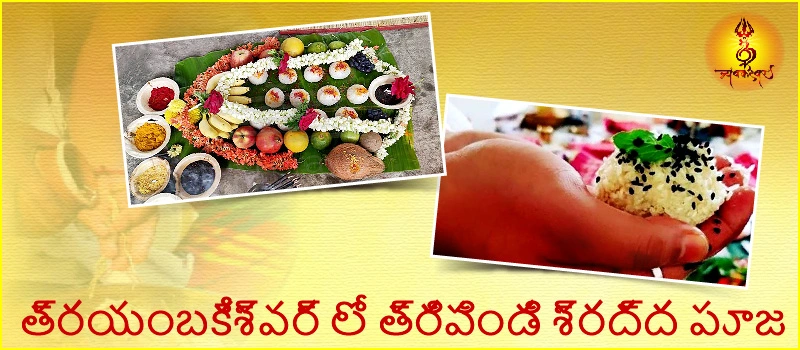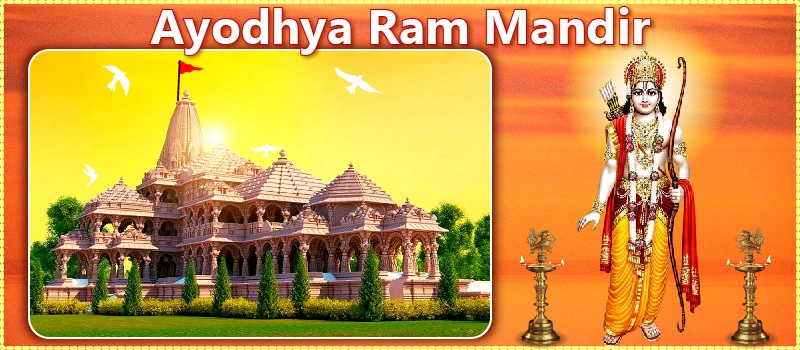

Mahalaxmi Temple Kolhapur | Shakti Peeth In India

Mahalaxmi Temple Kolhapur, Shakti Peeth In India | Maharashtra
Mahalaxmi Temple Kolhapur is one of the 52 Shakti Peethas in all of India and one of the important three-and-a-half Shakti Peethas of Maharashtra. All Shakti Peetha temples in India represent the Goddess Shakti i.e, Sati or Parvati, wife of Mahadev.
Kolhapur Mahalaxmi Shaktipeeth is one of the many significant pilgrimage sites in India. Mahalaxmi Mandir is also known as Ambabai Mandir. As Mahalakshmi is the wife of Lord Vishnu, Hence, the custom of visiting Venkateswara temple in Tirumala (Balaji temple) and Mahalakshmi in Kolhapur is followed in Hinduism. In Skanda Purana Goddess Kolhapur Mahalakshmi is composed as “Om Karveer Niwasini Namah” “Om Sesha Vasuki Sansevyaya Namah”.
Ambabai (Mahalakshmi) of Kolhapur is the Kuldaiwat( Family God)of many families in India.
Chhatrapati Shivaji Maharaj and Sambhaji Maharaj ruled this place for many years.
Architecture Of Kolhapur Mahalaxmi Temple
The architecture of Kolhapur Shaktipeeth Temple belongs to the Chalukya Empire and it is said that the temple was first built by Karnadeva around 700 AD. The Mahalakshmi idol of Kolhapur is made of sandstone and weighs 40 kilograms. The goddess wears a beautiful jeweled crown on her head. The height of Mahalaxmi goddess idol is about 2 feet 9 inches tall. Shree Mahalakshmi Devi's vehicle Lion, made of stone stands behind the Idol of the goddess. Shree Mahalakshmi Devi has four hands holding Mahalunga fruit (lemon fruit), Kaumodaki (mace), a shield, and a Panpatra. In Hinduism, almost all sacred idols are seen facing east or north. But Shree Mahalakshmi faces west. It is the architect's excellence, on 6 days from January 31st to February 2nd and November 9th to 11th, the rays of the sun coming from the Mahadwar fall directly on the face of the goddess Mahalakshmi. These days are celebrated as Kironotsav in Kolhapur Shakti Peeth temple.
The walls of the Kolhapur Shaktipeeth temple have beautiful carvings of niches and flowers. There are beautiful dancing nymphs whom we know as the yoginis.
Above the Garbhagruha it has an upper temple with an idol of Lord Ganesha and a Shiva linga in front known as Matulinga. An idol of Lord Shankara's vehicle Nandi stands outside the gabhara. Sri Yantra is seen carved on a wall inside the temple which is covered with glass for safety.
Under the tallest Mandapa in the east is the idol of Goddess Mahalakshmi. Under the central mandapa is the Kurma mandap and under the western mandapam is the Ganapati Chowk.
At a distance from the arches of the Garbhagruha is another entrance gate made of black stone, the entire temple's weight rests on this framework and this gate is considered a symbol of Shiva and Shakti.
The Kolhapur Mahalakshmi Temple was beautified in the 11th century by King Gandharaditya of the Silahara dynasty, he built a path to circumambulate Goddess Mahalakshmi. There are two domes of Goddess Saraswati and Mahakali on the north and south are connected by a circuitous route.
Rang Mandap :
Rang Mandap is hexagonal and it is divided into two parts. The temple where the first toran (तोरण) is built is called the Rang Mandap. The very beginning of the first toran (तोरण)is called the Darshan Mandapa and from here we can have the closest view of the idol of Goddess Mahalakshmi (Ambabai).
Kurma Mandap :
After that, the second part of the temple i.e., Kurma Mandap, is called Kurma because of the turtle (Kurma) sitting there. At this place, devotees who come for darshan are sprinkled with Tirtha from Shankh, so now this mandap is also called Shankhatirtha Mandap.
Both, Rang Mandap and Kurma Mandap have many dutifully carved pillars built from basalt Carnatic stone and black Kadappa stone.
Ganapati Chowk :
The third part of the temple is called Ganapati Chowk. In the area of Ganpati Chauk, there is a temple of Lord Ganesha and an idol of Rishi Agasti with his wife Lopamudra.
King Singhan of the Yadav dynasty built this Kurma Mandap and Ganapati. The portion from Shree Mahalakshmi Devi Temple to Ganapati Chowk is built with black stone and further construction was done with wood during the Maratha period.
Garud Mandapa:
The outermost temple called Garuda Mandap was added by Daji Pandit between 1838 and 1843.
In the north, Rajshree Shahumharaj has built Ghati Darwaza with a big bell. Kolhapur Mahalakshmi Devi Temple has several smaller temples. In 1941, Shrimant Jagirdar Babasaheb Ghatge installed the idol of nine planets (navgraha) on the left side after entering through Ghati Darwaza. On a high stone, there are idols of the Sun God, Shivlinga, Naugraha, Mahishasuramardini, and Sheshashahi Vishnu Temple. On the south side near the university gate, there are small temples of Kalabhairava, Radhakrishna, Siddhivinayak, Tuljabhavani, Lakshmi-Narayana, Annapurna, Indrasabha, Rameshwar, Narayanaswami Maharaj, various deities.
Chhatrapati Shivaji Maharaj’s daughter-in-law Tarabaie made a canon near the northern entrance of the Kolhapur Mahalaxmi Devi Temple. This canon is fired on certain days to salute Goddess Mahalakshmi. There are two water tanks named Manikarnika and Kashi in the Kolhapur Shaktipeeth temple area.
Kolhapurc Temple is surrounded by a pentagonal wall and this wall has 4 entrances. The idol of the goddess is easily visible from the main entrance in the west.
Kolhapur Mahalaxmi (Ambabaie) Daily Pooja:

Three and a half Shaktipeeths in Maharashtra are given special religious importance. Many people come from far away to visit these temples to take vows and fulfill their wishes. A divine couple resides in the Kolhapur Shaktipeeth Mandir (Temple of Ambabai). In the Kolhapur Shaktipeeth temple, Goddess Mahalksami (Ambabai) is worshiped many times a day.
- Mahalaxmi Temple Kolhapur Opening Time : 4 Pm
- Padyapuja and Mukhmarjan: 5 Am
- Kakad Arti: Kakad Aarti is performed between 5:30 am to 6 am after mouthwash and Paduka Pooja of Goddess. In Kakad Aarti we offer butter and sugar to Goddess Mahalakshmi and the aarti begins at 5:30.
- Morning Mahapuja: Mahapuja starts at 8:30 am by ringing the bell. In this, Panchamrit Abhishek, Shodshopachara Puja, and Khiri naivedya are offered to Mahalaksami Devi.
- Afternoon Mahapuja: Mahapooja Starts at 11:30 Am. Panchamrut Abhishek, Shodshopchar, and Puranpoli Naivedya are offered in Mahapuja.
- Alankar Pooja: Alnkar Pooja starts at 1:30 Pm. In this Pooja, Mahavastra offers to the Mahalaxmi Goddess and wears traditional gold jewelry on her idol.
- Dhuparti: The bell rings for Dhuparati at 8 pm and Dhuparati starts at 8:15. After the Dhuparti, Goddess Mahalakshmi is offered Ladu and Karanji Naivedya.
- Shejarti: Starts at 10:00 Pm. In this, we offer milk and sugar naivedya to Goddess Mahalaxmi at 10:15 am and the temple closes at 10:30. We call it night arti.
Festivals Celebration in Kolhapur Mahalaxmi (Ambabaie) Temple:
- Navratri: Navratri festival is celebrated in the month of Ashwin (October). Navratri is the biggest festival of Kolhapur Shakti Peeth temple and is celebrated with great enthusiasm. During Navratri, some Changes are made in the daily Aarti program. Goddess Mahalakshmi (Ambabaie) Abhisheka and Arti perform every morning at 8:30 Am and 11:30 Am. At 2 Pm Goddess is decorated with all ornaments. At 9:30 Pm Devi's is decorated with flowers and a procession is taken out. A police and military band is played during the Ambabaie procession and a cannon salute is given to the Mahalaxmi Goddess. On the day of Navratri, many cultural programs are held in the Mahalaxmi temple area. During these days, lakhs of devotees can be seen in the temple area
- Lalita Panchami: Lalita Panchami is the fifth day of Navratri. On this day, at 7 am and 10 am Abhishekam of Devi is performed, and a canon salute is given to the Mahalaxmi Goddess. After that, a procession of Mahalaxmi Devi is taken out to see Trimbuli Devi, which is a short distance from the main temple. In the presence of an unmarried girl from a Patil family of Kasba Bawda, Kolhapur, a Chhatrapati (Local royal Ruler) performs Kushmandbali. In the afternoon Goddess Palkhi is brought back to the temple and arti is performed.
- Ashtami: 8th day of Navratri is celebrated as an Ashtami. Mahalaxmi devi’s Abhishekam is done at 8:30 and 11:30 a.m. and Alankar Puja is performed as usual. Mahalakshmi Devi’s idol is kept in the Garuda Mandapam in the evening. At 9:45 a canon salute is offered to the goddess. After that, the Mahalaxmi goddess idol is placed on the throne and a procession is taken to Mahadwar Road, Bhausingji Road, Bhawani Mandap, and again to Mahadwar Road. By performing yajna puja, goddess arti is performed. This yajna puja continues till the morning of the next day. And this Pooja ends with Purnahuti. People fill Mahalakshmi's Ooti with blouse pieces, coconuts, bangles, sweets, etc
- Navmi : Navami is the 9th day of Navratri. On this day, as usual, the Mahalaxmi Devi was anointed. Ambabai Mahalaxmi Mandir Trust has made many facilities for the comfort of the pilgrims. As the stone floor of the Mahalaxmi temple gets very hot in summer, a matting facility is provided for the devotees to stand on. The Trust has also started many donation facilities to Ambabai Mahalakshmi Temple.
Pooja Vidhi Donation Amount In Kolhapur Ambabaie Mahalaxmi Temple:
Padyapuja: Rs 151 / Padyapuja fix deposit – Rs 6,001 (APPROX)
Kunkumarchan: Rs.201 / Kunkumarchan Fix Deposit – Rs.8001 (APPROX)
Panchamrit Abhishek: Rs 501/ Panchamrit Abhishek Fixed Deposit – 11,001 (APPROX)
Panchamrit Abhishek with Sari: 751 (APPROX)
Fixed deposit means, if you pay the fixed deposit amount, you can perform that Pooja at Mahalaxmi mandir for free once a year throughout your life.
Some Major Temples to Visit in India:
- Trimbakeshwar Jyotirlinga Mandir: Trimbakeshwar is located in Nashik city of Maharashtra. This historic Hindu temple is very famous for performing rituals like Kaal sarp dosh puja, Narayan Nagbali Pooja, Tripindi Shradh, and many more. Trimbakeshwar has a legacy of Tamrpatradhari Pandit.
- Vani Saptashrungi Devi Temple: Saptshringi Devi temple is located in the village of Vani situated near Nashik city Maharashtra. Vani Devi temple is considered as a half-shakti Peeth between the three and half-Shakti Peeth temples of Maharashtra.
- Tuljapur Tuljabhwani Devi Temple: Among all 51 Shaktipeeth of India, Tulhjabhwani temple of Tuljapur, Maharashtra is the second Shaktipeeth temple.
- Ayodhya Ram Mandir: This Hindu temple of Lord Rama is located in Utter Pradesh. It is believed that this sacred place is the birthplace of Lord Ram.
- Shirdi Sai Baba Temple: Shirdi Sai Baba Temple is one of the most active pilgrimage sites in India. Shirdi is the residence of Sai Baba and also the samadhi place.
- Somnath Jyotirlinga Temple: Somnath Temple is considered the first Jyotirlinga temple of India. Somnath Jyotirlinga is located in Gujrat, India.
- Kedarnath Jyotirlinga Temple: Kedarnath Jyotirlinga is located on the Himalayas peaks near the Mandakini River. Kedarnath temple is known as the eleventh Jyotirlinga temple among the 12 Jyotirlinga of India.
11 Mar '23 Saturday


Copyrights 2020-21. Privacy Policy All Rights Reserved
Designed and Developed By | AIGS Pvt Ltd

1.webp)

